BUSINESS
How to Use Color Psychology for Marketing and Branding

Do you want to understand how color psychology works to enhance your business branding?
The choice of color in marketing and branding influences how your target audience perceives your brand. Nailing color selection from the beginning is crucial to attracting the right audience and driving business success.
For this post, we consulted with the successful web design agency Alpha Efficiency to gain insights into color psychology. Keep reading to learn the best tactics, tips, and tricks for implementing colors accordingly into your branding.
Understanding (and Mastering) Color Psychology
Before you learn how to use color psychology the right way, you need to know what exactly is color psychology. Here is a summary of the most crucial information about every commonly used color:
- For instance, red represents strong emotions, like passion, energy, and excitement. Marketers use it to create a sense of urgency, which makes it ideal for call-to-action buttons.
- Blue awakens a feeling of trust, security, and professionalism. It is one of the most popular colors for corporate websites and brands.
- Yellow represents optimism, happiness, and warmth. If you want to send a cheerful message or quickly grab users’ attention, yellow is definitely the right color choice for a brand!
- Green is always a good choice if your business is centered around health, environment, or growth. It is mostly used by eco-friendly or health and wellness organizations.
- For premium brands, purple is often one of the first color picks. It is mostly associated with luxury, creativity, and higher status, which is precisely what high-end businesses seek.
- Orange expresses energy, friendliness, and enthusiasm. Its vibrant nature grabs attention fast, making it suitable for highlighting important elements of your design.
- White represents some form of purity, simplicity, and cleanliness. It is often used for minimalist designs, branding, and informative, serious sites.
- Lastly, Black is almost always paired with sophisticated, luxurious, and powerful brands. If used accordingly and with taste, its sleek and minimalistic design can create a sense of elegance.
How To Choose The Right Colors for Your Branding and Web Design
Follow these best practices to choose and implement a color palette for your brand successfully:
Consider Your Brand Identity
Your choice of color will play a crucial role in establishing a successful brand identity.
While selecting the colors for your website, consider how the given color will define your brand’s personality, values, and essence. For instance, if your brand identity is user-friendly, approachable, and sociable, you should consider using orange elements to highlight your website’s enthusiasm and friendliness.
Consistency Is Key
When you find the right color choices for your brand, the second important thing you need to remember is to stay consistent to achieve the right brand recognition.
For a primary color scheme, you should use hues that represent your brand’s main ideals and secondary ones to accompany the primary ones. Try to stick to this color palette across your marketing channels, from logos to website dressing and social media.
Remember To Think About Your Ideal Audience
As we learned, colors can evoke strong emotional responses. Your goal should be to achieve a meaningful and robust connection with your target audience, so choosing colors that resonate with them is paramount.
For example, if your website is focused on creating content intended for children, you will probably have to choose more vibrant and joyful colors, like red and yellow, to grab their attention and make them stay on your website and explore it.
Use Colors to Enhance Your Website Navigation Experience
Color cues are excellent for providing a better navigation experience for your website visitors. If you want clearer and more concise navigation across your website, assigning unique colors to different categories and sections can seriously elevate the exploring experience for your visitors. It will vastly enhance user experience and help your site visitors easily access the content they came searching for.
Be creative and Test Your Choice
Ultimately, the effectiveness of color choices can be very subjective and depends on your target audience’s preferences, so there is not one singular pattern you need to follow to achieve success.
It is recommended that you undergo a few tests before you launch your newly colored website to determine what choices suit you best. Conduct A/B testing to see how different color choices impact site user engagement and overall user experience. The results from these tests can help you refine your color palette and get even better results.
Final Thoughts
Understanding color psychology is vital for designing a successful branding that resonates with your target audience and drives sales.
Applying the right color palette choices can bring amazing results and change the way users see and interact with your business. Just make sure to find the color scheme that goes well with your brand’s personality and test it out before you air it. You will successfully achieve the full potential of color psychology, leading to greater conversions and revenue.
BUSINESS
The Top Reasons Businesses Rely on Answering Services for Daily Operations

Customer expectations are higher than ever. Whether people are calling to make a purchase, schedule an appointment, or resolve a concern, they expect immediate, professional interaction. For many businesses, maintaining that level of responsiveness around the clock is difficult without additional support. This is where answering services come in, not just as a convenience, but as a crucial part of how modern companies operate.
From improving customer experience to freeing up internal resources, answering services play a strategic role in daily business success.
Ensuring Every Call Is Answered
Missed calls can lead to missed opportunities. Whether it’s a potential client reaching out for the first time or a returning customer needing support, a call that goes unanswered can quickly become a lost lead. Answering services help businesses ensure that no call slips through the cracks, especially during high-volume periods, weekends, or after hours.
This constant availability signals reliability. Clients appreciate prompt responses, and consistent communication can help strengthen brand reputation over time. For industries like healthcare, legal services, and home repair, timely interaction is critical and sometimes time-sensitive.
Enhancing Customer Experience
The first impression of a company is often shaped by how it handles incoming calls. Friendly, professional interactions set the tone for what customers can expect from a business. A trained representative who listens, responds clearly, and guides the caller appropriately can turn a basic inquiry into a meaningful engagement.
Answering services specialize in customer communication and are trained to handle a variety of caller situations. They can offer appointment scheduling, FAQ support, and even crisis management with poise. This level of service helps businesses stand out in crowded markets where customer experience can be a key differentiator.
Managing Call Volume During Busy Times
Businesses experience natural fluctuations in call volume throughout the day, week, or year. During product launches, promotional events, or holiday seasons, phone lines often become overwhelmed. Internal teams may not be equipped to handle the spike, leading to long wait times and frustrated customers.
Outsourcing to an answering service helps companies scale up their communication support during peak times without hiring temporary staff. The transition is seamless, and calls are handled with consistency regardless of when they come in. For industries that experience seasonal shifts, this flexibility is especially valuable.
Allowing Staff to Focus on Core Tasks
Every phone call requires attention, even if it’s just to redirect someone or confirm business hours. These small interruptions can disrupt workflow and reduce productivity, particularly in small teams.
When staff are pulled away from their primary responsibilities to answer the phone, overall efficiency suffers. This is why many service-oriented businesses seek external solutions for communication. Incorporating structured phone support for service providers allows in-house teams to focus on what they do best, whether it’s hands-on service, technical work, or client management. Removing the burden of constant call handling improves internal morale and keeps operations running smoothly.
Offering Multilingual Support
In an increasingly globalized market, businesses interact with clients from many language backgrounds. Answering services can be equipped to provide multilingual support, making it easier for callers to communicate comfortably and clearly. This creates a more inclusive experience and opens up markets that might otherwise remain unreachable.
When customers feel understood and respected, they are more likely to engage with the brand, follow through on purchases, and recommend the service to others. Offering bilingual or multilingual call support demonstrates cultural awareness and forward thinking.
Saving Money on Staffing Costs
Hiring and training a full-time receptionist or customer service team requires time and resources. For small and mid-sized businesses, this expense can be prohibitive. Answering services provide a cost-effective alternative by offering professional coverage without the need for on-site staff.
Packages are often customizable based on call volume and service needs. Businesses can start with basic support and scale up as they grow. This model makes it easier to manage budgets while still delivering a high level of customer interaction.
Supporting 24/7 Availability
Customers don’t just operate during regular business hours. With online shopping, remote work, and international clientele, calls can come in at any hour. Answering services offer 24/7 coverage, ensuring that inquiries are managed regardless of time zone or day of the week.
This extended availability increases trust and reduces the risk of missed business. It also allows companies to present a more professional image, especially to clients who expect constant access. A consistent, around-the-clock presence can make a big difference in retaining customer loyalty.
Helping with Emergency Call Handling
Certain industries, like healthcare, plumbing, or IT, often receive emergency requests that require immediate attention. Answering services are trained to triage these calls, determine urgency, and contact the appropriate team member based on preset protocols. This ensures rapid response and clear communication in stressful situations.
Having this kind of structured support in place can prevent small issues from becoming major problems. It shows clients that the business is prepared, professional, and responsive when it matters most.

Answering services have evolved from a backup solution into a vital part of many businesses’ daily operations. They help streamline communication, enhance customer satisfaction, and support growth, all without overwhelming internal staff. With flexibility, professionalism, and efficiency at the core, they offer a smart solution for companies looking to stay competitive.
BUSINESS
The Role of Leadership in Shaping Modern Business Culture

Did you know that the leadership development market is expected to reach $282003.53 million by 2034? This shows the growing importance of strong leadership in today’s business world.
Leadership is more than just a title; it is essential in shaping business culture. In today’s fast-changing business world, strong leadership is key to success. Whether leading a small team or a large company, the impact is significant.
In this article, we will explore the roles of leadership that can shape culture and support long-term success. Keep reading to learn more.
Visionary Leadership
Great leaders are visionaries who look beyond today’s challenges. They focus on long-term goals and future success. This mindset helps guide the organization forward.
They set a clear direction for the team to follow. This direction aligns with the company’s goals and values. It creates a path everyone can understand and support.
When leaders share their vision, it gives employees purpose. People know their roles and how they contribute. This unity builds a strong and focused culture.
Role Modeling
Leaders help shape the culture by setting the tone. Their actions speak louder than words. Team members often follow their lead.
Strong leaders show integrity, accountability, and inclusivity. These values guide how they work each day. Their example inspires others to do the same.
A positive culture grows when leaders live the values they promote. This builds trust and unity in the workplace. People are more likely to follow when they see leadership doing the right thing.
Empowerment and Delegation
Modern leaders focus on empowering their teams. They avoid micromanaging and encourage independence. This builds confidence within the workplace.
Delegating tasks shows trust in employees’ abilities. It allows team members to grow and develop. Leaders support without controlling every step.
Empowered employees feel more engaged in their roles. They take initiative and ownership of their work. This leads to better satisfaction and higher productivity.
Fostering Innovation and Creativity
Innovation is key to staying competitive in today’s fast-changing market. Businesses must keep evolving to meet new demands. Leaders play a big role in making this possible.
Good leaders create spaces where creativity can thrive. They welcome new ideas and support fresh thinking. This helps teams feel safe to share and experiment.
When employees are encouraged to contribute ideas, great things can happen. Breakthroughs become more likely. The company also builds a strong reputation as an industry leader.
Communication and Collaboration
Open communication is essential in today’s workplace. It helps build trust and keeps everyone informed. Leaders must set the example by being clear and honest.
Feedback should flow in all directions. Leaders should listen as much as they speak. This builds a culture where everyone feels heard and valued.
Collaboration grows when communication is strong. Teams work better together and solve problems faster. Explore more insights on effective leadership at www.buildingchampions.com.
Building a Successful Modern Business Culture
Leadership is key to shaping today’s business culture. Great leaders guide with vision and lead by example. They help teams grow and succeed together.
By empowering others and encouraging innovation, leaders build strong workplaces. Good communication and a focus on diversity support lasting success. Taking these steps helps leaders create a culture where people and performance thrive.
BUSINESS
What to Expect from Professional Excavation Services

When you start a construction project, you might wonder what it takes to get the land ready. The answer often lies in the hands of excavation services. These professionals play a vital role in preparing your site for what comes next, whether it’s building a home or establishing a new road.
Understanding what to expect from these services can help reduce stress and make the entire process smoother.
The Importance of Excavation
Excavation is the process of moving earth, rock, or other materials to prepare a site for construction. Without this crucial step, your project could face many issues down the line.
For instance, a properly excavated site ensures that the foundation is strong and stable, which is essential for the safety of any structure built on top. The experts in excavation services understand the land and what needs to be done to make sure everything is just right.
What Professionals Bring to the Table
Hiring excavation professionals means you receive the benefit of their experience. These experts know how to assess the land, identify potential problems, and execute a plan to deal with them effectively. Their skills help avoid complications that can occur without proper preparation.
They will examine the soil types, look for rocks or other obstacles, and understand the water drainage patterns. All of this information is crucial for ensuring that your project progresses without a hitch.
Types of Excavation Services
Different projects require different kinds of excavation. Here are a few common types that professionals provide:
Site Preparation
This includes clearing the land to make way for construction. It’s important to remove trees, bushes, and other debris to create a clean slate for the builders. Site prep in Montana is essential if you want to ensure that the environment is ready for your project’s specific needs.
Trenching
This type involves digging narrow trenches to install utilities like water pipes, sewer lines, or electrical cables. This process must be done with precision to avoid damaging existing utilities.
What to Expect During the Process
When you work with excavation services, the process generally unfolds in several steps. Professionals will conduct an assessment of the site. They look for any potential barriers, such as rocks or high water tables, that could affect the excavation.
Once they have a clear picture, they will provide you with an outline of the work that needs to be done. With their expertise, you can reduce stress and confidently move forward with your construction plans.
The team will gather the necessary equipment, including diggers and backhoes. Safety is always a priority, so they will often set up barriers to keep the work area secure. If there are any neighbors nearby, they may inform them about the work schedule to minimize disruptions.
Cost Considerations
While you may be eager to start your project, it’s essential to think about the costs associated with excavation. Prices can vary based on the size and complexity of the job.
Factors include the amount of dirt that needs to be moved, any materials that need to be removed, and the type of machinery required. By discussing your budget with professionals upfront, you can find ways to work within your limits without sacrificing quality.
Getting Help From Professional Excavation Services
Understanding what to expect from excavation services not only prepares you for the process but also helps ease your mind. The professionals involved play an important role in building a safe and sturdy foundation for your project. Reach out to excavation services today, and get ready to see your project take shape!

 Cartoon1 year ago
Cartoon1 year agoUnlocking the Potential of Nekopoi.care: A Comprehensive Guide

 Game1 year ago
Game1 year agoExploring Aopickleballthietke.com: Your Ultimate Pickleball Destination

 BUSINESS1 year ago
BUSINESS1 year agoWhat Companies Are In The Consumer Services Field

 BUSINESS1 year ago
BUSINESS1 year agoUnraveling the Mystery of 405 Howard Street San Francisco charge on Credit Card

 HOME IMPROVEMENT1 year ago
HOME IMPROVEMENT1 year agoVtrahe vs. Other Platforms: Which One Reigns Supreme?

 TECHNOLOGY1 year ago
TECHNOLOGY1 year agoThe Guide to Using Anon Vault for Secure Data Storage

 ENTERTAINMENT11 months ago
ENTERTAINMENT11 months agoUnderstanding Bunkr Album: A Comprehensive Guide

 ENTERTAINMENT1 year ago
ENTERTAINMENT1 year agoThe Epic Return: Revenge of the Iron-Blooded Sword Hound
















